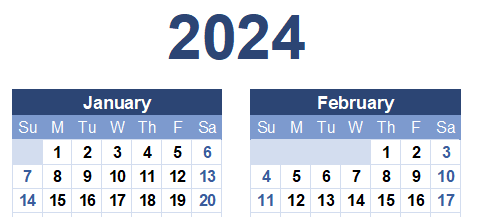Is your calendar full? Are you in control of your time? Are you able to concentrate on the important things, or do you get caught up in busy work? Do you have to juggle compulsory work? Do you have enough time to study and develop? Who prioritises your tasks?

Work meaningfulness and prioritisation
Work motivation is largely based on the meaningfulness of the work and the fact that the work is perceived as useful. An important starting point for this is to identify the objectives and outcomes of the work and to understand their importance. These form the basis for prioritising work, i.e. determining the order of importance of tasks.
Prioritisation always happens. The question is, who does it and on what basis?
Prioritisation should reflect the relative importance of different projects and other work in line with the organisation’s objectives. Therefore, prioritisation of work should take place between projects and teams. If it is not clear to the employee how the different tasks are prioritised, it will be up to the individual to prioritise them. Every morning, when planning the daily work list, the employee prioritises the work. Does the order then reflect the organisation’s objectives, or the person’s own preferences?
Fires
We don’t always get to choose the jobs, but sometimes the jobs choose the place and time. Busy jobs appear from time to time. When a fire breaks out, we stop what we are doing and concentrate on putting out the fire. Real firefighters are a profession in their own right, tasked with ensuring readiness and availability for the moment of fire. Firefighters are appropriately resourced and job planning ensures availability for urgent assignments. The rest of us have more to do than just extinguish fires. How flexible is our schedule if unexpected urgent jobs come up? Our ability to handle occasional fires depends on things like:
1. How flexible can we be in our time management?
2. Is there more than one person in the organisation who can support each other if necessary?
3. Can we get help from external experts if necessary?
Managing urgent work past the job planning process should not be the normal state of affairs. The work and resource management process needs to be redesigned if people are constantly spending all their time on urgent tasks.
Calendar reservations
Our calendars are full of joint meetings with other people, training sessions, personal events, things to remember to do. The calendar is a great tool for programming your time. With shared calendar reservations, it is possible to make progress on tasks that need more participants.
Some of the calendar reservations are soft, which are reasonably easy to reorganise and move around. These include, for example, different things to remember or reservations just for ourselves or for a small number of people in our own organisation.
Some of the calendar reservations could be described as hard, not easy to move or change. These include conferences, training courses, product launches and, for example, end-of-year events that are strictly tied to the calendar and communicated to a wide audience.
The timing of calendar reservations takes into account their importance and urgency. Once a booking has been made, it is not desirable to move it, as moving it will confuse the schedules of several people.
When planning your calendar, it is worth considering at least these things:
1. Meetings and joint activities must be booked in advance in the calendar, or they will not take place.
2. Reservations for large numbers of people must be made well in advance. For example, you’re hopelessly late if you’re trying to book a company party for the current week.
3. Take into account the preparation for calendar events and the transition from one meeting to another.
4. Each meeting must have: purpose, agenda, time and place, preliminary information and preparation of participants, final results..
5. Don’t let others control your calendar too much. If necessary, make time in your calendar for things to do other than meetings. Try to set aside whole days free of meetings, for independent work.
Task lists and Kanban diagrams
Often, the most important work is done outside the calendar reservations. Whether we are talking about so-called line work, project work or content creation. When we are set objectives or defined deliverables, achieving them requires independent work. We may be assessed, reviewed and guided in meetings marked in the calendar, but the actual work is done over a longer period of time. We manage these objectives and deliverables with separate task lists and Kanban charts. These may be a person’s own task lists or they may be Kanban or Gantt charts or other work plans shared by the team or project.
Tasks on the to-do list will be completed if they have:
1. A clear mission statement
2. Graduation criteria
3. Unambiguous liability
4. Deadline or review date
As the leader of the team or project, make sure that the person in charge has the time, skills, tools and motivation to do the job.
Microsoft downloads Tasks, Gantt charts and Kanban in one tool
In November 2023, Microsoft announced that it will combine the management of a person’s own tasks Tasks-application, a Kanban tool designed for managing team work, and the Planner and a new easy-to-use project management tool, Project for The Web a tool. In 2024, we will see Microsoft Teams and its own browser app, the new Planner -which combines a person’s own work, team work plans and project schedules and resource plans.

